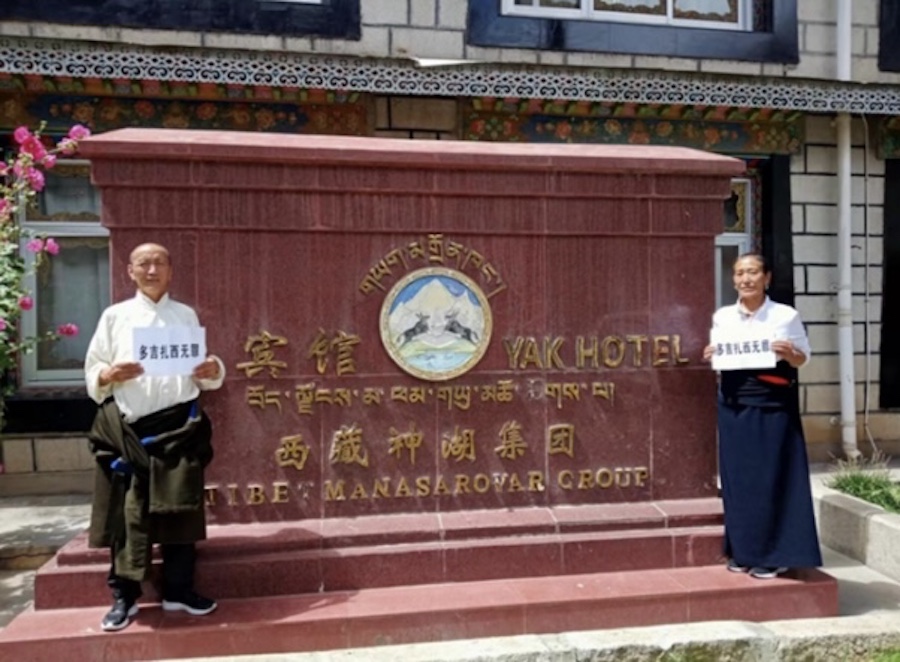COLUMN : “DIALOGUE ”
TOPIC : “TIBET : LOST CAUSE ?”
Participants : VIJAY KRANTI, Print and Tv journalist, PRAFULL GORADIA, Political Commentator (Former BJP Member of Parliament and former editor of BJP TODAY)
By Vijay Kranti, Print and TV journalist
Prime Minister Atal Bihari Vajpayee’s visit to China has once again brought Tibet on to the centrestage of Asian politics. On the one hand, the Chinese are claiming to have succeeded in getting India to recognise, for the first time in an explicit way, the Tibet Autonomous Region as part of China’s territory. On the other, Indian Foreign Minister Yashwant Sinha claims there is no change in India’s policy on Tibet.
Irrespective of the degree of truth of the claims on each side, the bottom line is that more than 50 years after the forcible occupation of Tibet, China’s communist leaders are desperate to get India’s stamp of approval on their claim. It only exposes their sense of insecurity and guilty conscience.
With Vajpayee’s historic Beijing visit behind us, it would be worthwhile to see if Tibet still holds any chance as a nation or if it is a lost cause. Going by the Indian Government’s record since Mao unleashed his People’s Liberation Army on a hapless Tibet in 1949, there has never been any meaningful political or military support from New Delhi to Lhasa or to the exiled Dalai Lama after his escape in 1959. In the aftermath of the humiliation at the hands of the Chinese army in 1962, India did support the UN General Assembly’s third resolution (1965), condemning Chinese atrocities in Tibet. But New Delhi had refused to lend support to the earlier two identical UN resolutions (1959, 1961).
However, the most significant Indian contribution to the Tibetan cause has been its liberal help and support to the 120,000 Tibetan refugees in settling and reviving their national cultural identity in India.
Despite lack of Indian political support and Beijing’s 50-year-long efforts to destroy Tibetan identity, one can’t escape the fact the Tibetan struggle is alive and kicking. Tibetan resistance has been in various shapes, with varying power and from many directions.
Starting with the situation inside Tibet, China has scooped out and assimilated two Tibetan provinces-Kham and Amdo-into the adjoining Chinese provinces of Sichuan, Ganzu, Yunnan and Quinghai. Despite a two decade-long cultural revolution plus a five-decade long chain of suppression that took a toll of over 12 lakh Tibetans and over 90 per cent of their monasteries, Beijing keeps sending hundreds of Tibetans to jails every year for defiance.
Acts of defiance include public demonstrations, pro-independence wall posters and carrying pictures of the Dalai Lama, whom the Chinese have been trying to paint as a serf owner, divisionist and gang leader of bandits. An average 2,000 Tibetans flee to the free world every year via Nepal, risking Chinese bullets to mark their protest against colonial masters. In exile, a handful of 150,000 refugees under the Dalai Lama’s leadership have organised themselves into one of the most disciplined and outstanding refugee communities since 1959.
Today they run a government-in-exile in Dharamsala, which has its own constitution, an elected parliament, nearly 20 Embassies and almost all departments a government can boast of except its own rail, mail, jail and currency. The Dalai Lama, who used to be refused visas in 1960s by Sri Lanka and Thailand, is today a celebrated and respected statesman receiving standing ovations in some of the world’s most powerful parliaments. Nearly 20 countries-including EU members, the US, Germany-have over 40 resolutions supporting his Tibetan cause. There have been occasions when more than 800 city mayors of prominent world cities have put the Tibetan flag on top of municipal buildings to express support for the Tibetans.
Nearly 400 Tibet Support Groups with over 1,000 branches in almost every prominent city and university of the free world have come to take on the Chinese challenge on Tibet. These TSGs have proved their people’s power in so many forums, including the World Bank which was forced to ask the Chinese to withdraw a loan application for projects in parts of Amdo. Scenes of irritated visiting Chinese leaders confronted by pro-Tibet demonstrators in dozens of countries have become common news in the past two decades. Similarly, official threats from Beijing to Governments permitting the Dalai Lama’s public receptions have made the Tibetan issue popular.
With global support building up for Tibet, push can come to shove for a China suffering from internal turmoil, corruption, regional aspirations and political instability. A repeat show of the Soviet collapse in the People’s Republic of China will surely see a free Tibet.









